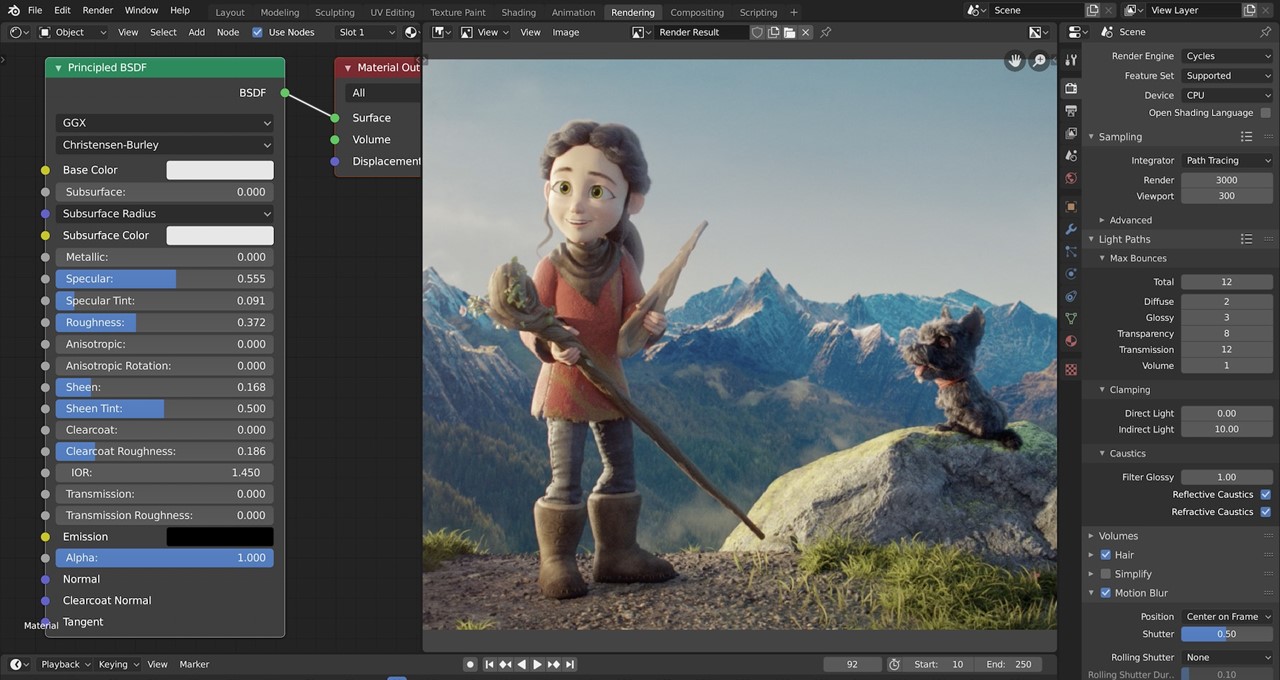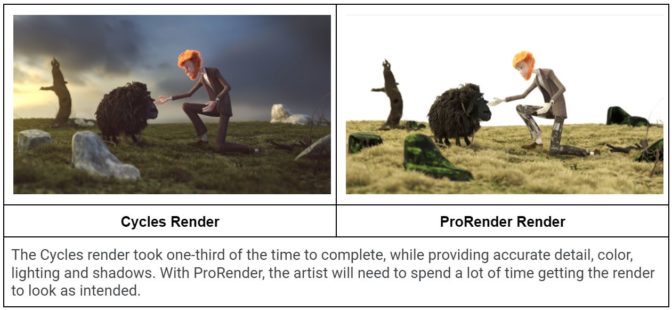With a new hybrid work environment, companies are turning to the cloud to enable employees to maintain productivity while working remotely.
AWS’s new EC2 instances (G5) with NVIDIA A10G Tensor Core GPUs can deliver 3x faster performance for a range of workloads from the cloud, whether for high-end graphics or AI.
The G5 instances, available now, support NVIDIA RTX Virtual Workstation (vWS) technology, bringing real-time ray tracing, AI, rasterization and simulation to the cloud. RTX vWS enables artists to create real-time cinematic quality renderings of photorealistic environments with physically accurate shadows, reflections and refractions.
It also brings the power of AI to visual computing, so users can automate repetitive tasks, enable all-new creative assistants and optimize compute-intensive processes. Taking advantage of RTX-accelerated applications can help cloud users boost creativity and productivity from any location.
NVIDIA tested the latest G5 instances with A10G GPUs and compared the performance to the G4dn instances, which use NVIDIA T4 Tensor Core GPUs.
The results show that the NVIDIA-powered G5 instances provide up to:
- 3.2x faster professional graphics performance
- 3.7x better rendering performance
- 2.7x faster performance for video editing workloads
- 3.7x faster gaming performance
Enhanced Performance for Professional Graphics
For workstation application benchmarking, NVIDIA used the industry-standard SPECviewperf 2020 workstation graphics benchmark, which measures the 3D graphics performance of systems running under the OpenGL and DirectX application programming interfaces. The benchmark’s workloads, called viewsets, represent graphics content and behavior from actual applications.
G4dn instances provided superior graphics performance, but G5 instances bring that performance to the next level, with up to 3x better performance than the previous generation.
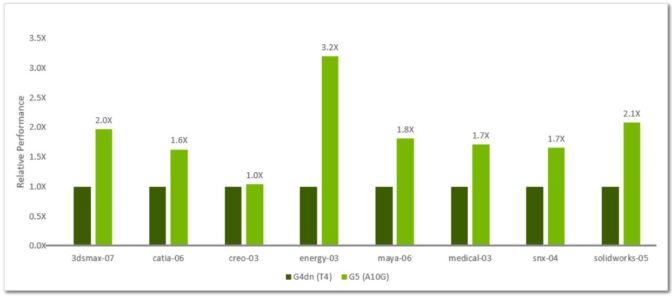
Accelerated Rendering
Powered by NVIDIA A10G GPUs, G5 instances are ideal for rendering, providing up to 3.7x faster rendering performance than G4dn instances that use the T4.

Additionally, the broad ecosystem of supported renderers with NVIDIA RTX vWS enables users to have a more seamless experience, with accurate shadow detail and lighting, reduced noise and increased photorealistic accuracy.
Designers and artists can choose the rendering software best-suited for their task, taking into account their personal preference and familiarity with it.
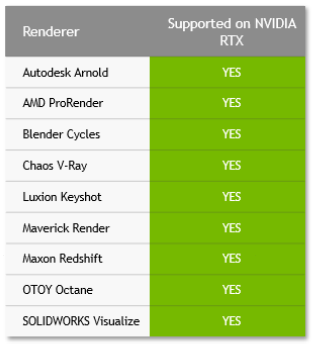
Faster Video Editing
Video editing applications such as DaVinci Resolve can use multiple GPUs to accelerate effects processing and advanced grading effects. A good test for GPU performance can be accomplished by testing advanced effects and features, as well as measuring the encoding performance, which is not limited by the project frame rate.
To measure video editing capabilities of the GPU in Resolve, NVIDIA tested five video timelines using advanced effects. When working on advanced video sequences featuring GPU-accelerated effects, the G5 instance shows up to 2.7x faster performance versus the G4dn instances on T4.
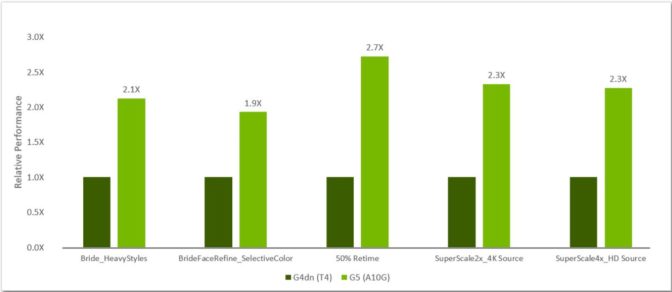
Improved Gaming Performance
NVIDIA Gaming PC on AWS supports NVIDIA Deep Learning Super Sampling (DLSS), an advanced AI-based rendering method that uses Tensor Cores on the NVIDIA A10G GPUs to render images at a lower resolution, and a deep learning neural network to scale up the content to the display resolution without losing detail.
Using NVIDIA DLSS, professionals can produce image quality that’s comparable to native resolution — and sometimes even better — while only rendering a fraction of the pixels. This allows gamers to achieve faster, more interactive frame rates without affecting visual quality. They can also use more demanding visual quality settings, including ray tracing, while maintaining acceptable frame rates.

Only NVIDIA-accelerated instances can take advantage of technologies such as hardware-accelerated real-time ray tracing and DLSS, supported by many apps and games.
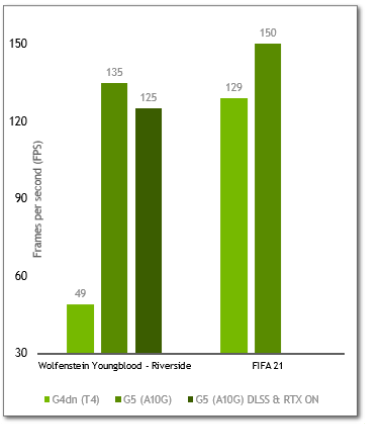
The new AWS EC2 G5 instances, available now, give designers, artists and technical professionals the power of NVIDIA RTX — with rich graphics enhancements and innovations only available from NVIDIA.
Featured blog image courtesy of Blender.
